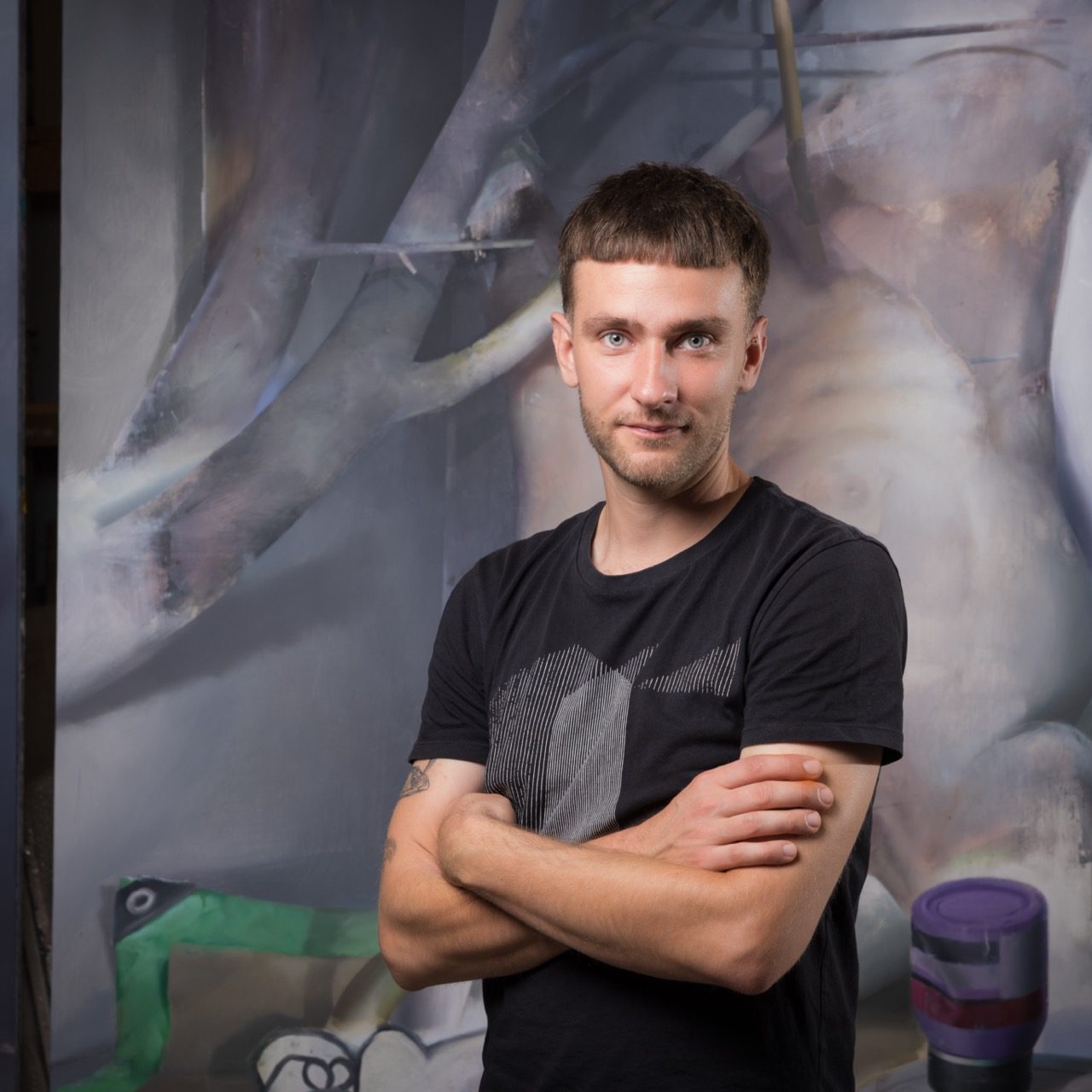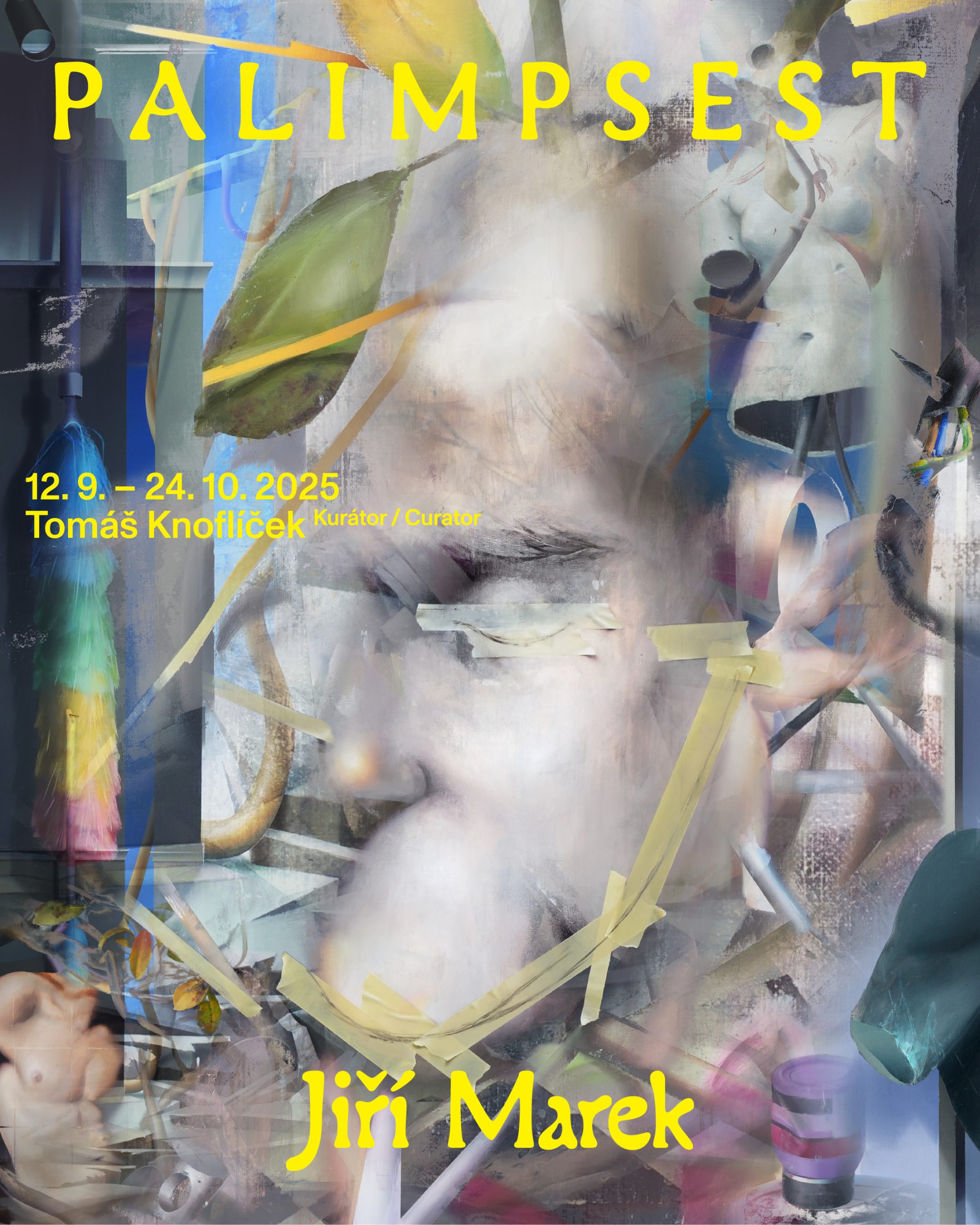Jiří Marek

At a time when images circulate through the digital world at the speed of data flow and vanish before we have time to truly perceive them, Jiří Marek approaches painting primarily as an act of grounding. For him, the physical artwork is not a formal relic, but a way to re-establish the connection between eye, hand and memory, a way of reaching out and touching reality.
With evident fascination, Marek sifts through the vast terrain of cultural debris, blending the present with historical references, drawing on both lived experience and the collective consciousness. Throughout, however, he remains focused. He picks up fragments of reality one by one, carefully examines them, and, when necessary, dusts them off – not to restore their former shine, but to lay bare the traces of their wear and tear. His fascination with ruins and his attempt to capture disintegration through painterly record reflect, on the one hand, a sense of existential uncertainty, and on the other, a desire to understand how things work, a drive to penetrate the structural essence of individual forms, and to view our present and future more lucidly through the lens of the past.
The American art theorist and curator Douglas Crimp described memory as a heterogeneous sediment of cultural strata, constantly being revised and rewritten to suit contemporary needs and ideologies. In order to capture this asynchronous movement, in On the Museum’s Ruins and other essays he adopted the concept of the palimpsest, originally a parchment manuscript on which older text was erased and overwritten. Yet this erasure was never completely successful: letters, words and sentences from the original text would still shimmer faintly beneath the surface of the new. A reader of a palimpsest therefore inevitably perceives not only the last entry, but also, at least subconsciously, senses the fragmented layers beneath it.
Marek’s approach to painting operates on a similar principle. His paintings do not seek original sources, but rather structures of meaning. They tell us, in an echo of Crimp, that beneath every image there is always already another. In the immediate post-Covid period, as the artist delved deeper into exploring the social memory of humanity and transferred individual synapses onto canvas as onto a photosensitive plate, his almost surgically precise technique appeared to serve him well. But over time, he began to recognise the limitations of this approach and turned toward a method that partially suppresses his techné in return for a closer symbiosis with the core message of his images and thus more easily expresses the elusive essence of memory, its intrinsic unreliability, its jump cuts and fragmentary nature. In other words, the technique allows him to turn his own canvas into a palimpsest. He mastered the process of layering and subsequent washing out while still at art school, and his inner doubts had often forced him to revisit his works, piling up pentimenti, changing and correcting. At a certain point, however, he no longer felt the need to conceal these traces. Disjointed fields, at times illusionistic paintings with elements of trompe-l'œil, textures emphasising materiality, have become not only the ideal medium for an associate web of motifs, but also a powerful metaphor for his way of thinking through images.
